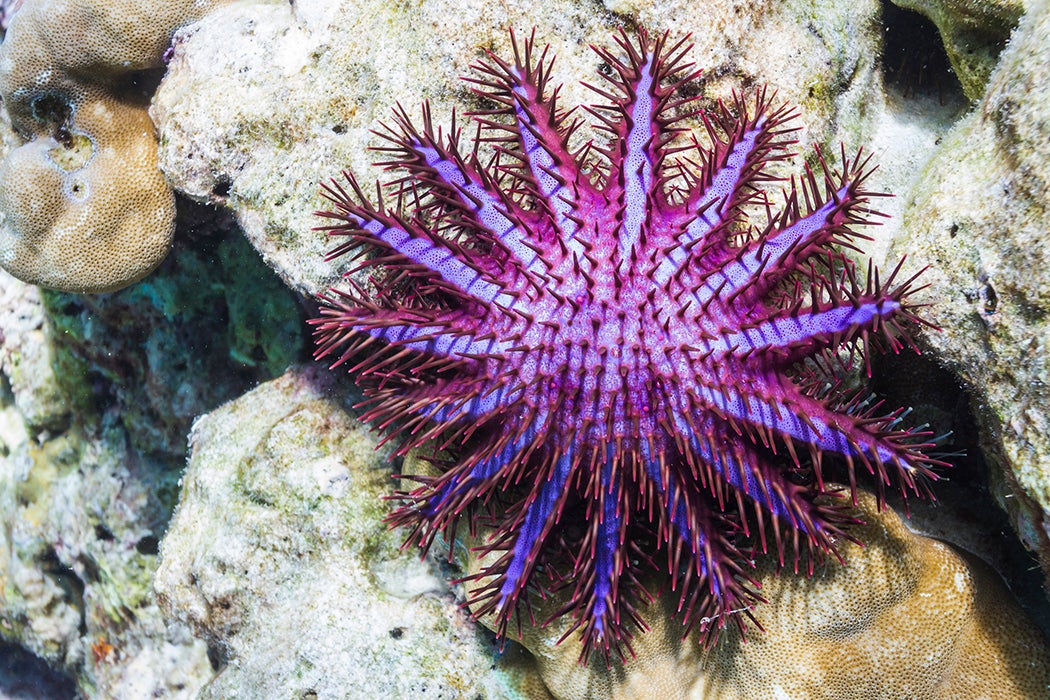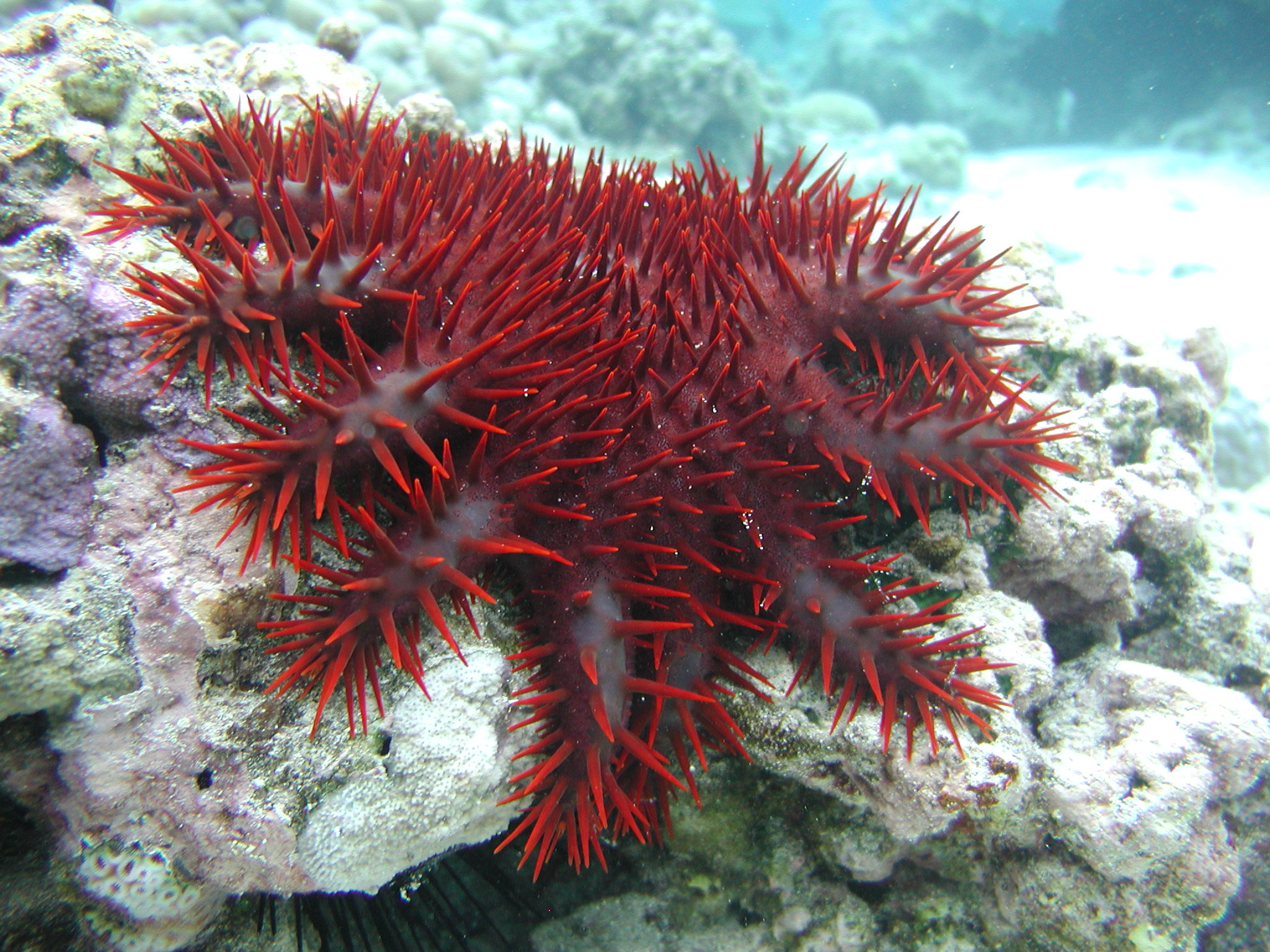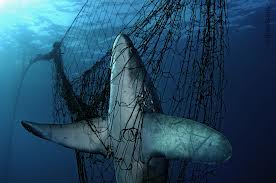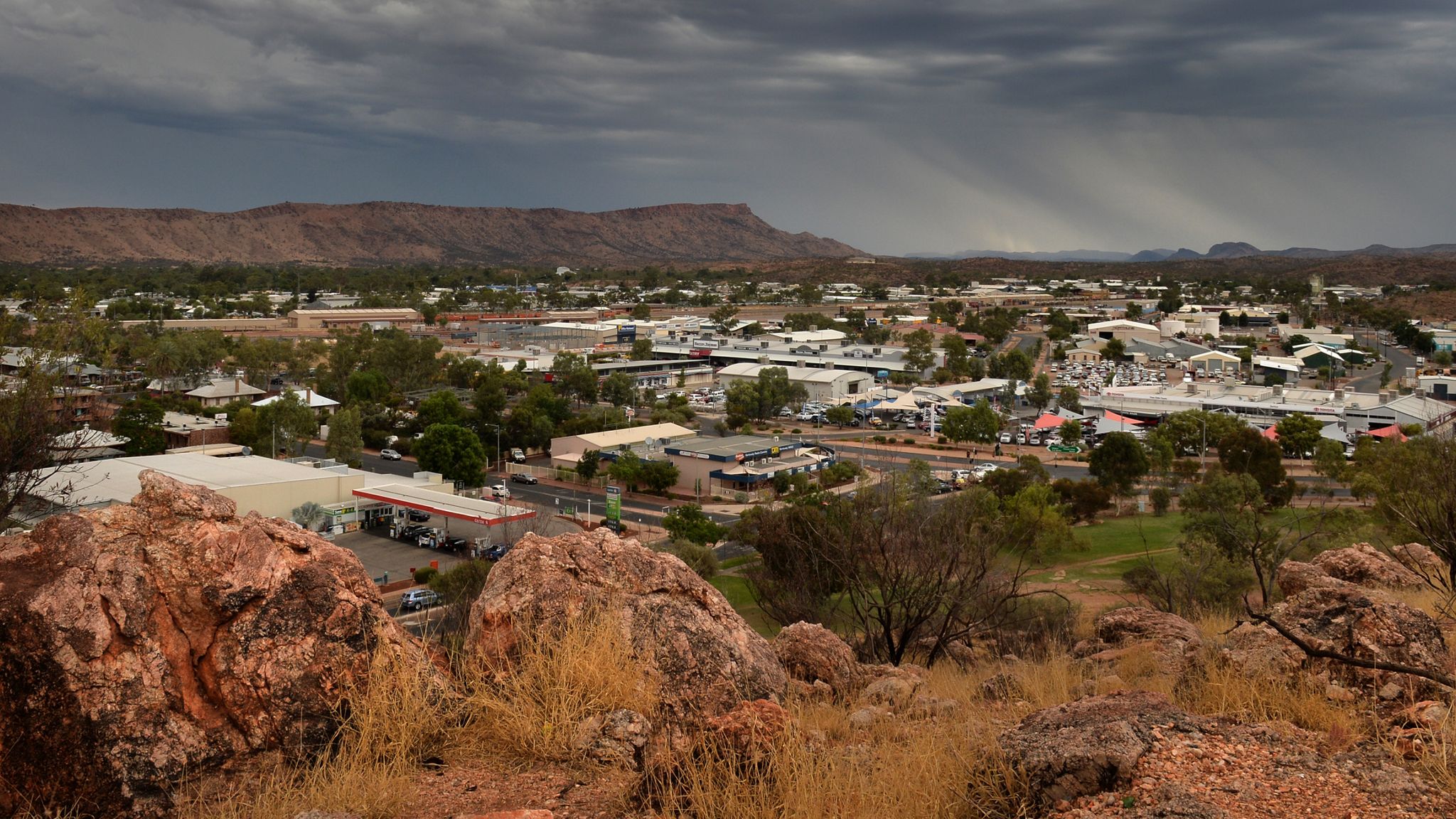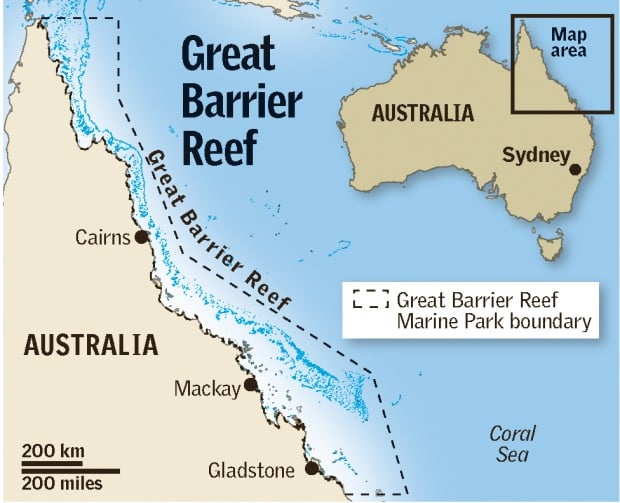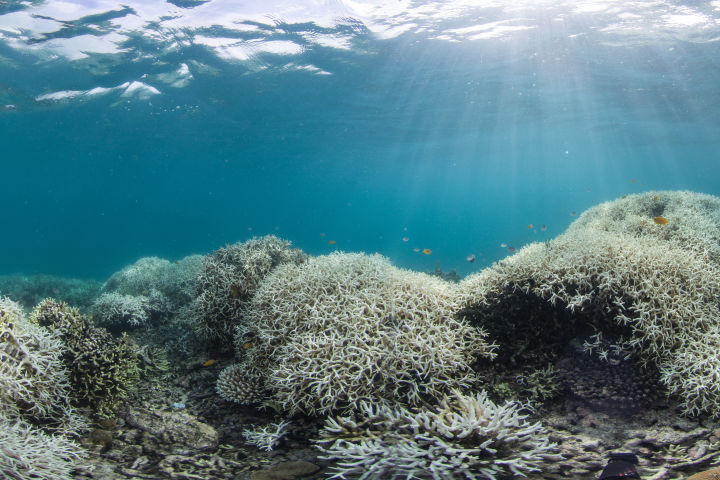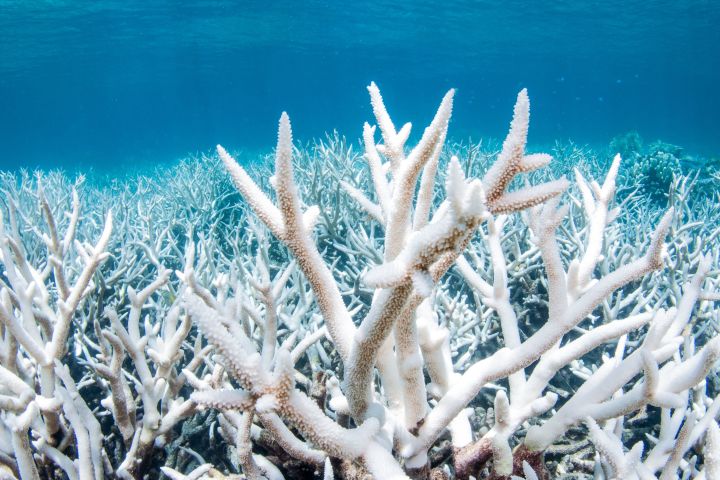The Great Barrier Reef is one of the largest ecosystems on the planet, rivaling the Amazon Rainforest and the Sahara desert. It is so large that you can see the reef from the International Space Station. It is difficult to fathom that something that large can be significantly damaged by a creature as small as a starfish. That’s right, one of the main reasons that significant expanses of coral in The Great Barrier Reef get damaged is the Crown of Thorns Starfish.
According to The Great Barrier Reef Foundation, are nocturnal by nature and move at speeds up to 20 meters an hour. They prey on nearly all species of coral and one Crown of Thorns Starfish can eat through 10 square meters of coral per year. Not only do the Crown of Thorns Starfish eat coral, they intoxicate it as well. The Crown of Thorns Starfish is covered in spikes that contain toxins that are venomous to both humans and marine creatures. The number of Crown of Thorns Starfish in the reef are usually miniscule, but every couple of years an outbreak occurs. When an outbreak occurs, approximately 15 Crown of Thorns Starfish are found in every hectare area. There are approximately 35 million hectares in the Great Barrier Reef. That means that every outbreak, approximately 525 million Crown of Thorns Starfish are feeding on coral in the Great Barrier reef. During these outbreaks the 525 million Crown of Thorns Starfish can collectively strip around 90% of the reef’s living coral tissue.
These Crown of Thorns Starfish outbreaks do not occur on a strict cycle like Cicada swarms (which occur every 17 years). According to The Great Barrier Reef Foundation, the starfish outbreaks occur when people overfish. The most notable predators of the Crown of Thorns Starfish being the trigger fish. When overfishing occurs, a number of species of fish, including the trigger fish, in The Great Barrier Reef decreases. The overfishing and subsequent removal of the Crown of Thorns Starfish’s natural predator from the ecosystem create an environment for many starfish to prey on coral without the fear of being attacked.
This is a significant problem not just for the coral, but for the rest of the Great Barrier Reef ecosystem. A majority of the the smaller marine life such as fish, crustaceans, and molluscs rely on the coral for shelter. So, if the coral they use as shelter is dead because Crown of Thorns Starfishes eat and intoxicate their coral, a significant percentage of marine life will be dangerously exposed to predators.
In order to counteract the Crown of Thorns Starfish and mitigate the damage it causes, the Australian government has begun to organize patrols across The Great Barrier reef to observe and keep an eye on the Crown of Thorns Starfish. According to barrierreef.org, over 160 coral reefs in The Great Barrier Reef are being monitored and over 70,000 Crown of Thorns Starfish have been culled (selectively slaughtered). Not only has the government organized patrols, they have also invested significant resources towards keeping the Crown of Thorns Starfish in check. According to the same article, the Australian government approximately $58 million dollars into a Crown of Thorns Starfish control fund. This fund is not only finances the patrols that slaughter the starfish, it also funds innovative researchers that are trying to discover ways to stop the Crown of Thorns Starfish from feasting on the coral, without killing them.
The Australian government has made the Crown of Thorns Starfish a priority as well. By investing into the prevention and extermination of the Crown of Thorns Starfish, the Australian government has committed to the protection and longevity of The Great Barrier Reef. This problem is being well counteracted by the government, so the effectiveness of the Crown of Thorns Starfish hinges on what average citizens do.
The Crown of Thorns Starfish is one of the most underestimated dangers to The Great Barrier Reef. A starfish is so unassuming and seemingly innocent. They prey on the coral throughout the reef, taking away the shelter of countless marine species in the reef, which leaves them vulnerable. It is also worth noting that the Crown of Thorns Starfish would not be nearly as damaging to the reef if people didn’t help them by overfishing and removing their predators from the reef. This problem may seem unsolvable due to the fact that a member of The Great Barrier Reef ecosystem is damaging the reef, but citizens can help mitigate the Crown of Thorns Starfish’s affect of the reef by not overfishing.
